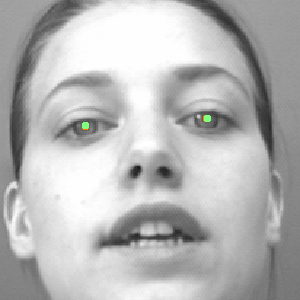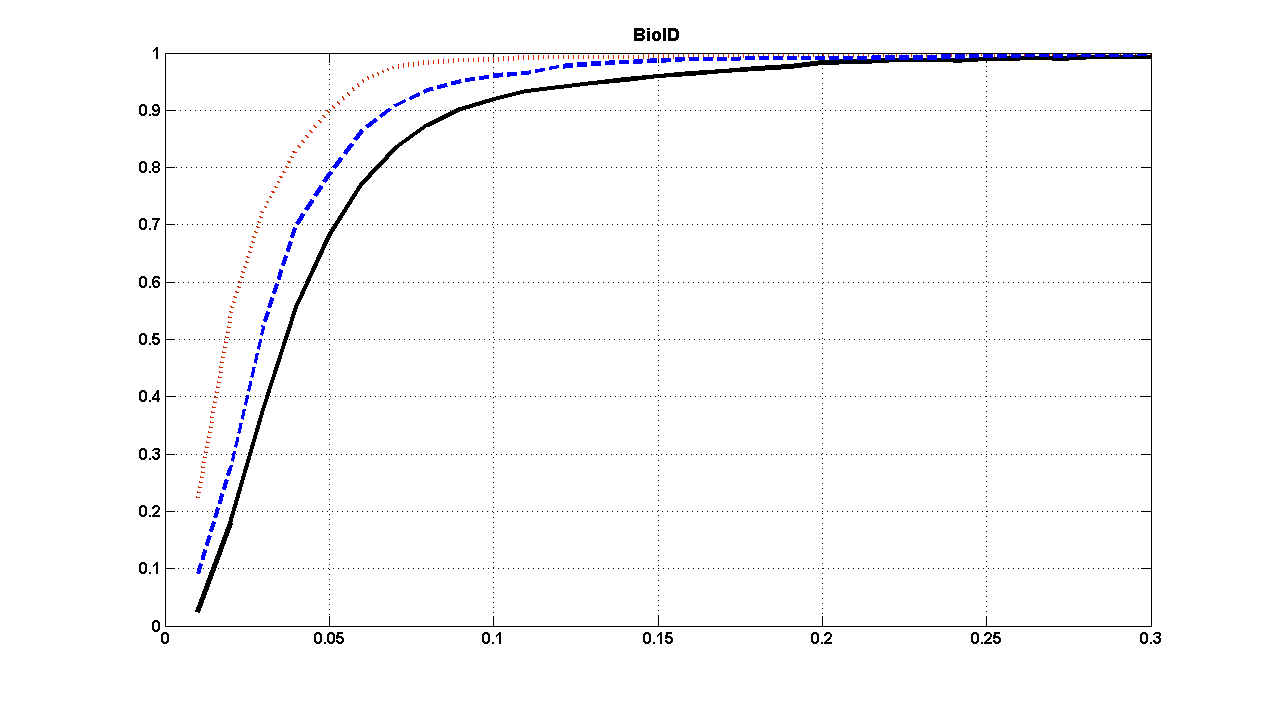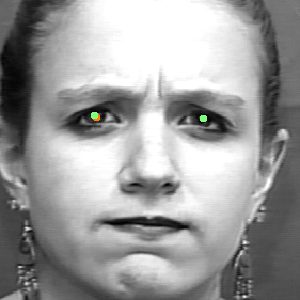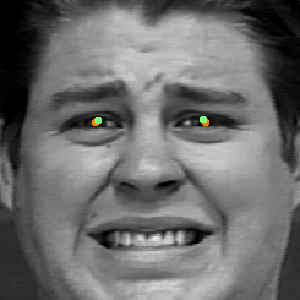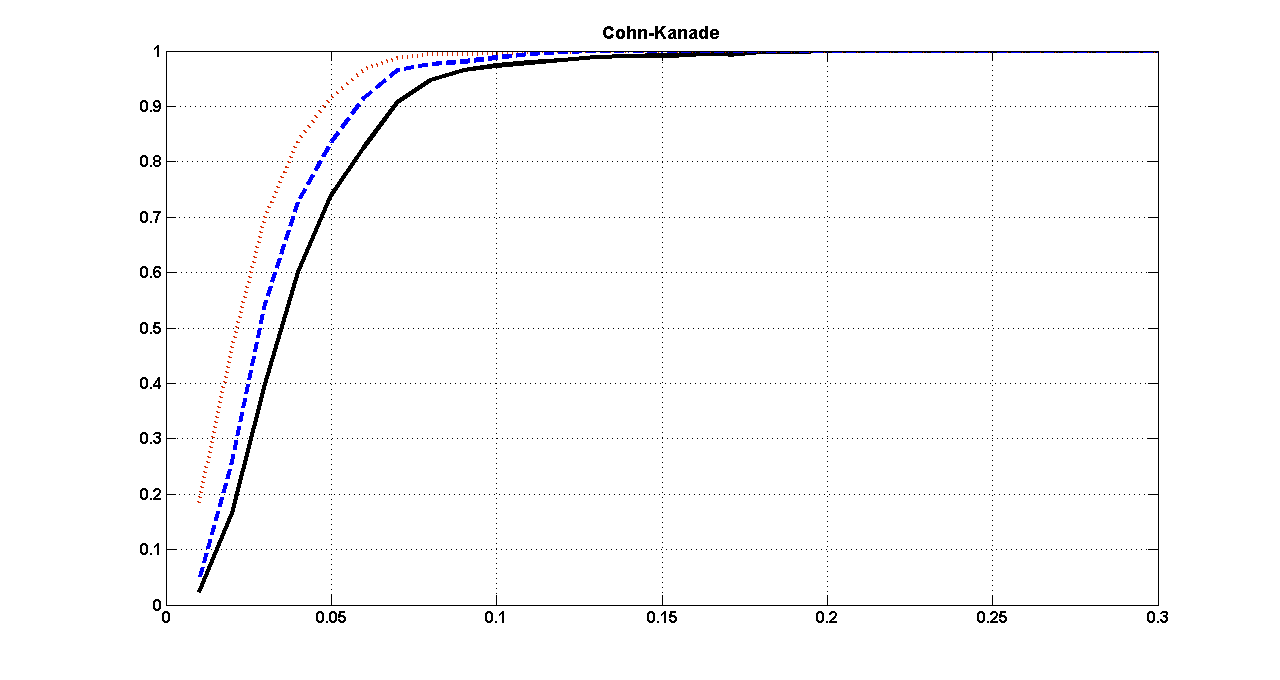|
||||||||||||
| Home CV Publications Supervising Research Personal | ||||||||||||
Face Analysis Tools
Eye Landmarks Localization for Neuro-Linguistic Programming (NLP)We investigate the recognition of Eye Accessing Cues (EACs) used in Neuro-Linguistic Programming (NLP) by means of computer vision techniques. We want to verify the use of the EAC model for understanding the meaning of non-visual gaze directions. Any specific EAC is identified by the relative position of the iris within the eye bounding box and we investigate several methods for determining the eye bounding box and the exact iris position. We introduce a new database - Eye-ChIMERA - that we will make public soon. EAC model is the part of the NLP theory that describes the eye-movements that are not used for visual tasks and suggests that the direction of gaze can be an indicator for the internal representational system used by a person, who may think in visual (i.e. images), auditory (sounds) or kinesthetic terms (feelings), as well as for the mental activity of that person, of remembering, imagining or having an internal dialog. 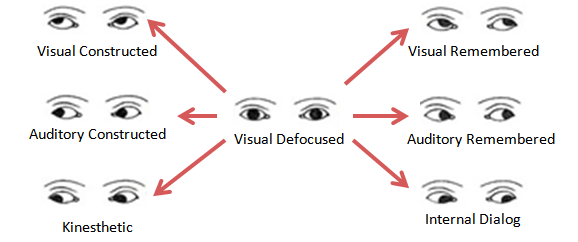 Main papers on the topic: Laura Florea, Corneliu Florea, Constantin Vertan: Remote Recognition of the Gaze Direction: Anchoring with the Eyebrows, Journal of Visual Communication and Image Representation, Volume 35, Pages 67-77, ISSN 1047-3203, DOI: 10.1016/j.jvcir.2015.12.003, WOS:000369879600006, 2016 (ISI impact factor 1.53, Elsevier) Ruxandra Vranceanu, Corneliu Florea, Laura Florea, Constantin Vertan: Direction estimation by component separation for recognition of Eye Accessing Cues, Machine Vision and Applications, 2015, DOI: 10.1007/s00138-014-0656-8, Online ISSN 1432-1769, Springer Berlin Heidelberg, 2015 (ISI impact factor 1.444, Springer)[preprint] Laura Florea, Corneliu Florea, Ruxandra Vranceanu, Constantin Vertan: Can Your Eyes Tell Me How You Think? A Gaze Directed Estimation of the Mental Activity, British Machine Vision Conference (BMVC), UK, 2013. [pdf], [additional materials] Ruxandra Vranceanu, Corneliu Florea, Laura Florea, Constantin Vertan: NLP EAC Recognition by Component Separation in the Eye Region, 15th International Conference on Computer Analysis of Images and Patterns (CAIP), UK, 2013. [pdf]
Eye-Chimera Database Eye-ChIMERA (EYE part from the Cognitive process Inference by the Mutual use of the Eye and expRession Analysis)
database has been constructed specifically to test algorithm discrimination power in the 7 gaze situations named
in the EAC-NLP model. Frames extracted are the relevant ones from videos recorded either with Canon 600D
(640 x 480 resolution), either with Panasonic HDC-TM 60 (1920 X 1080) cameras on 40 subjects in the 20-30 age range.
Illumination is typical-indoor and the light comes from one side. The subjects were asked to follow specific movement patterns
and the significant frames were cropped out. The five eye landmarks named in [this]
paper are manually marked by three experienced annotators and their average is reported as ground truth. The landmarks markings
are delivered with the database. Furthermore, the images have been grouped in 7 gaze direction cases.
Eye LocalizationWe introduce a novel feature based on the combination of integral image projections with TESPAR signal encoding and classification. Such computed features are used as inputs into a Multi Layer Perceptron and the resulting framework is capable of performing fast and robust eye localization. Main papers on the topic: The method was described in: Laura Florea, Corneliu Florea, Constantin Vertan: Robust Eye Centers Localization with Zero-Crossing Encoded Image Projections Pattern Analysis and Applications, DOI: 10.1007/s10044-015-0479-x, ISSN 1433-7541, Springer London, 2015 (ISI impact factor 1.104, Springer) [preprint arXiv] Laura Florea, Corneliu Florea, Ruxandra Vranceanu, Constantin Vertan: Zero-crossing Based Image Projections Encoding for Eye Localization, EUSIPCO 2012, pp. 150-154, 27-31 august 2012, Bucuresti, Romania. [poster] , [pdf] Downloads: Matlab executable [code]. It is build for Windows and requires MATLAB Compiler Runtime . The code is free to be used for academical purposes, providing that you cite the previous papers. For commercial use or other platform builds, please contact Laura FLOREA directly. Results: The code has been successfully tested on:
|
||||||||||||

